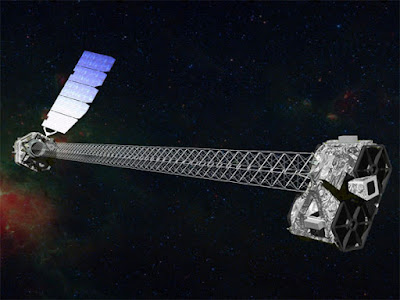NuSTAR NASA Black Hole Hunter with X-RAY Eyes - YouTube
A large number of galaxies are hiding black holes that we can't detect, and NASA's NuSTAR will use X-ray vision to find them.
Missions - NuSTAR - NASA Science
The Nuclear Spectroscopic Telescope Array is an Explorer mission that will allow astronomers to study the universe in high energy X-rays. Launching in 2012, NuSTAR will be the first focusing hard X-ray telescope to orbit Earth and is expected to greatly exceed the performance of the largest ground-based observatories that have observed this region of the electromagnetic spectrum. NuSTAR will also complement astrophysics missions that explore the cosmos in other regions of the spectrum.
X-ray telescopes such as Chandra and XMM-Newton have observed the X-ray universe at low X-ray energy levels. By focusing higher energy X-rays, NuSTAR will start to answer several fundamental questions about the Universe including:
- How are black holes distributed through the cosmos?
- How were heavy elements forged in the explosions of massive stars?
- What powers the most extreme active galaxies?
Source: Missions - NuSTAR - NASA Science
NASA's newest X-ray telescope will have a lengthy structure that unfolds in space, allowing it to see high-energy objects like feeding black holes. To view the video of mast deployment in space animation please click here.
Artist's concept of NuSTAR on orbit. NuSTAR has a 10-m (30') mast that deploys after launch to separate the optics modules (right) from the detectors in the focal plane (left). The spacecraft, which controls NuSTAR's pointings, and the solar panels are with the focal plane. NuSTAR has two identical optics modules in order to increase sensitivity. The background is an image of the Galactic center obtained with the Chandra X-ray Observatory. Image credit: NASA/JPL-Caltech
Source: NuSTAR - MULTIMEDIA GALLERY

